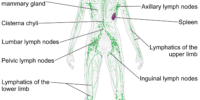Exploring Body Scan Meditation Vs. Mindfulness Meditation

Are you curious about the differences between body scan meditation and mindfulness meditation? In this article, we will delve into the basics of both practices, explore the benefits they offer, and teach you techniques to incorporate them into your routine.
By comparing the effects of body scan and mindfulness meditation, you’ll gain a clearer understanding of which practice best suits your needs.
Get ready to embark on a journey of self-discovery and find the meditation style that resonates with you.
Key Takeaways
- Body scan meditation focuses on enhancing body awareness and relaxation, while mindfulness meditation cultivates present-moment awareness and emotional regulation.
- Body scan meditation can improve sleep quality, reduce muscle tension, and strengthen the mind-body connection.
- Mindfulness meditation can reduce anxiety and depression, improve attention and focus, and increase empathy and compassion.
- Both body scan and mindfulness meditation have research evidence supporting their effectiveness and can be integrated into daily routines for managing pain and navigating daily life situations.
The Basics of Body Scan Meditation
To begin body scan meditation, you’ll start by lying down in a comfortable position. Close your eyes and take a few deep breaths to relax your body and mind.
The purpose of body scan meditation is to bring awareness to each part of your body, from head to toe. Start by focusing your attention on your toes, noticing any sensations or tension. Slowly move your attention up to your feet, ankles, and so on, until you reach the top of your head.
As you scan each body part, try to release any tension or stress you may feel. Body scan techniques can help you cultivate a sense of relaxation and mindfulness throughout your entire body.
The benefits of body scan meditation include reduced stress, improved sleep, and a greater connection to your physical sensations.
Understanding Mindfulness Meditation
When practicing mindfulness, you focus on your breath and observe your thoughts without judgment.
Mindfulness practices involve bringing your attention to the present moment and cultivating a nonjudgmental awareness of your experiences.
Mindfulness exercises can take various forms, such as sitting meditation, walking meditation, or body scan meditation.
These exercises help you develop a deep sense of presence and connect with the sensations in your body.
By directing your attention to different parts of your body, like your toes, legs, and head, you become more aware of any tension or discomfort that may be present.
This awareness allows you to release physical and mental tension, promoting relaxation and overall well-being.
Mindfulness meditation is a powerful tool for managing stress, enhancing focus, and cultivating a greater sense of peace and clarity in your daily life.
Benefits of Body Scan Meditation
By focusing on different parts of your body, you can become more aware of any tension or discomfort that may be present during body scan meditation. This practice allows you to intentionally scan your body from head to toe, paying attention to each area individually. As you do so, you may notice areas of tension or discomfort that you were previously unaware of.
This increased body awareness can be beneficial in many ways, including improved sleep quality and enhanced overall body awareness.
- Improved sleep quality: Body scan meditation helps release tension and relax your body, promoting a more restful sleep.
- Enhanced body awareness: By regularly practicing body scan meditation, you become more attuned to the sensations and needs of your body, allowing you to address any discomfort or tension promptly.
- Reduced muscle tension: Body scan meditation helps identify and release muscle tension, promoting relaxation and relieving physical discomfort.
- Stress reduction: By focusing on your body and breath during body scan meditation, you can reduce stress and promote a sense of calm and relaxation.
- Mind-body connection: Body scan meditation helps strengthen the connection between your mind and body, allowing you to better understand and respond to the signals your body sends.
Techniques for Practicing Mindfulness Meditation
There are various techniques for practicing mindfulness meditation that can help cultivate a sense of presence and inner peace.
One technique is breath awareness, where you focus your attention on your breath. Simply observe each inhale and exhale, noticing the sensation and rhythm of your breath. This helps to anchor your awareness in the present moment and calm your mind.
Another technique is visualization, where you imagine a peaceful scene or object in your mind’s eye. This can be a serene beach, a tranquil forest, or any place that brings you a sense of calm and relaxation. Visualizing this scene helps to create a mental escape and promotes a state of mindfulness.
Incorporating Body Scan Meditation Into Your Routine
If you’re looking for a way to deepen your relaxation and reap the benefits of body scanning, there are a few techniques you can try.
Body scanning is a powerful mindfulness practice that can help you release tension and become more aware of your body.
Benefits of Body Scanning
Focus on the sensations in your body and notice how body scanning meditation can help you become more aware of any tension or discomfort. By practicing body scanning, you can reap numerous benefits, including relaxation and stress reduction.
Here are some reasons why body scanning is beneficial:
- Deep relaxation: Body scanning meditation allows you to systematically relax each part of your body, promoting a deep sense of relaxation and calm.
- Increased self-awareness: Through body scanning, you become more attuned to the subtle sensations in your body, helping you identify areas of tension or discomfort.
- Stress reduction: Body scanning meditation helps release built-up tension in your muscles, reducing stress and promoting a sense of calm.
- Mind-body connection: By focusing on your body, you strengthen the connection between your mind and body, enhancing overall well-being.
- Improved sleep: Regular practice of body scanning can help you relax before bed, leading to better sleep quality and rejuvenation.
Incorporating body scanning into your routine can provide you with a powerful tool for relaxation and stress reduction. Give it a try and feel the benefits for yourself.
Techniques for Deep Relaxation
To achieve deep relaxation, try incorporating techniques such as progressive muscle relaxation or guided imagery into your routine.
These deep relaxation techniques can help you find relief from stress and promote a sense of calm in your daily life.
Progressive muscle relaxation involves tensing and then releasing different muscle groups in your body, which can help release tension and promote relaxation.
Guided imagery, on the other hand, involves visualizing peaceful and calming scenes in your mind, allowing your body and mind to relax and let go of stress.
Both of these stress relief methods can be easily incorporated into your daily routine, whether it’s before bed or during a break throughout the day.
Give them a try and experience the deep relaxation and stress relief they can provide.
Comparing the Effects of Body Scan and Mindfulness Meditation
There’s a noticeable difference in the effects of body scan and mindfulness meditation. While both techniques aim to promote relaxation and reduce stress, they have distinct benefits.
Here are five key differences to consider:
- Body scan meditation focuses on systematically scanning your body for sensations and bringing awareness to each area. This technique can help release tension and promote physical relaxation.
- Mindfulness meditation, on the other hand, involves observing your thoughts, emotions, and bodily sensations without judgment. It cultivates a non-reactive awareness and can help you develop a more accepting and compassionate attitude towards your experiences.
- When it comes to stress reduction, both techniques have been found to be effective. However, body scan meditation may be particularly helpful for individuals who struggle with physical tension and bodily discomfort.
- In terms of pain management, both body scan and mindfulness meditation have shown promise. Body scan meditation can help individuals increase their tolerance for pain and develop a more relaxed relationship with their bodies.
- Mindfulness meditation, on the other hand, can help individuals observe their pain without getting caught up in negative thoughts or emotions, reducing suffering.
Frequently Asked Questions
How Long Should a Body Scan Meditation Session Typically Last?
A body scan meditation session typically lasts around 20-30 minutes. It helps enhance your awareness of bodily sensations and promote relaxation. The duration may vary based on personal preference and availability, but consistency is key to reaping the benefits.
Can Body Scan Meditation Help With Chronic Pain Management?
Body scan meditation can be beneficial for chronic pain management. Research shows its effectiveness in providing relief. By focusing on each part of your body, you can cultivate awareness and reduce pain sensations.
Is It Necessary to Lie Down While Practicing Body Scan Meditation?
No, it’s not necessary to lie down while doing body scan meditation. There’s a controversy about the lying position. Some argue it helps with concentration, while others find it distracting.
Are There Any Specific Breathing Techniques Associated With Mindfulness Meditation?
Yes, there are specific breathing techniques associated with mindfulness meditation. Breath awareness and deep breathing techniques are often used to help you focus and bring your attention to the present moment.
How Often Should One Practice Body Scan Meditation to Experience Its Benefits?
To experience the benefits of body scan meditation, practice it regularly. Aim for a frequency of at least a few times a week. Start with shorter sessions, around 10-15 minutes, and gradually increase the duration as you become more comfortable.









